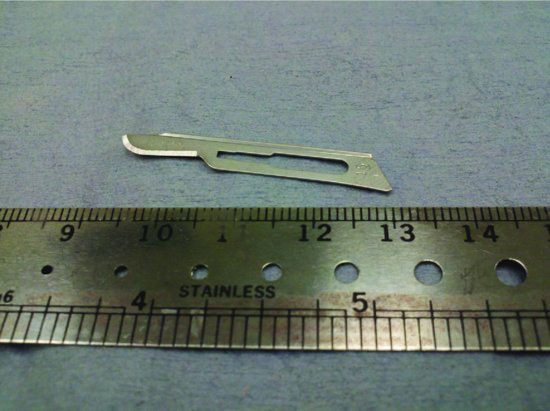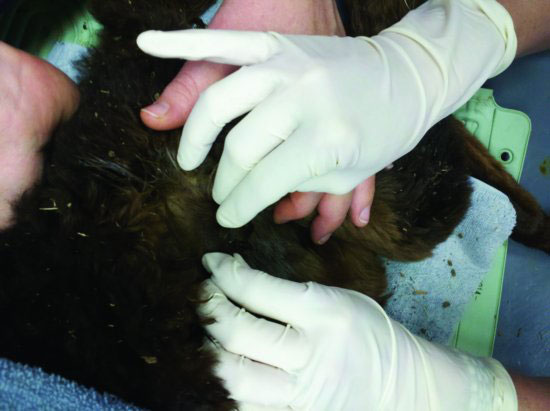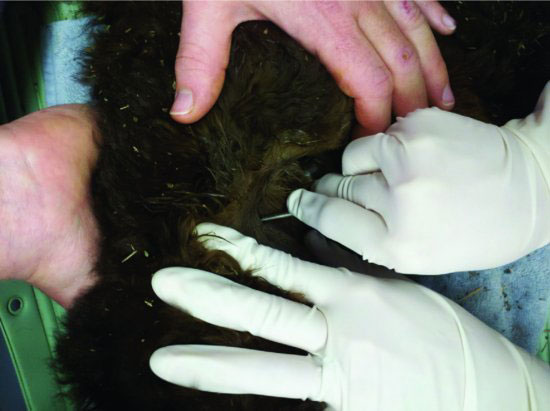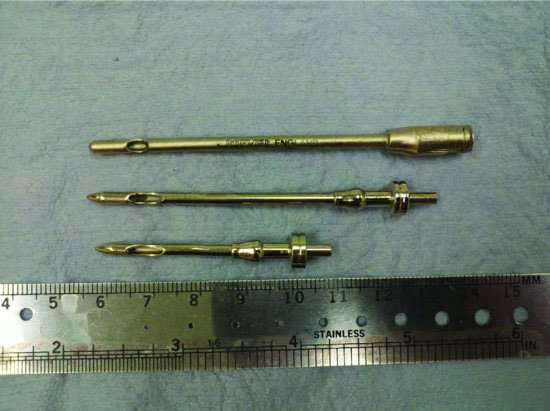Figure 19.2 A No. 15 scalpel blade may be used to create a small skin incision to facilitate passage of the cannula.

Figure 19.3 The skin incision may be made using a skin tenting technique to ensure that the abdomen is not inadvertently penetrated.

Figure 19.5 Placement of the teat cannula into the peritoneal cavity is achieved by steady pressure.

Stay updated, free articles. Join our Telegram channel

Full access? Get Clinical Tree



